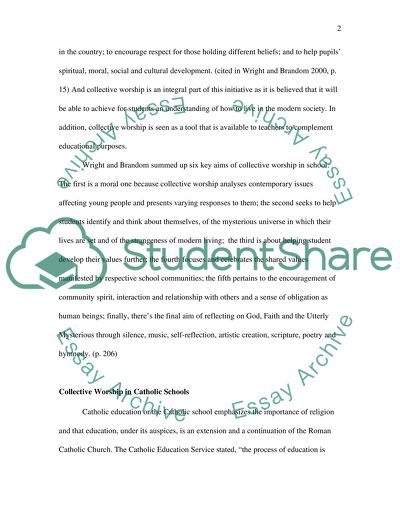Cite this document
(Collective Worship in a Catholic School Term Paper Example | Topics and Well Written Essays - 1500 words, n.d.)
Collective Worship in a Catholic School Term Paper Example | Topics and Well Written Essays - 1500 words. https://studentshare.org/religion-and-theology/1570225-what-are-the-pronciples-that-need-to-underpin-the-planning-and-devlivery-of-collective-worship-in-a-catholic-school
Collective Worship in a Catholic School Term Paper Example | Topics and Well Written Essays - 1500 words. https://studentshare.org/religion-and-theology/1570225-what-are-the-pronciples-that-need-to-underpin-the-planning-and-devlivery-of-collective-worship-in-a-catholic-school
(Collective Worship in a Catholic School Term Paper Example | Topics and Well Written Essays - 1500 Words)
Collective Worship in a Catholic School Term Paper Example | Topics and Well Written Essays - 1500 Words. https://studentshare.org/religion-and-theology/1570225-what-are-the-pronciples-that-need-to-underpin-the-planning-and-devlivery-of-collective-worship-in-a-catholic-school.
Collective Worship in a Catholic School Term Paper Example | Topics and Well Written Essays - 1500 Words. https://studentshare.org/religion-and-theology/1570225-what-are-the-pronciples-that-need-to-underpin-the-planning-and-devlivery-of-collective-worship-in-a-catholic-school.
“Collective Worship in a Catholic School Term Paper Example | Topics and Well Written Essays - 1500 Words”. https://studentshare.org/religion-and-theology/1570225-what-are-the-pronciples-that-need-to-underpin-the-planning-and-devlivery-of-collective-worship-in-a-catholic-school.


